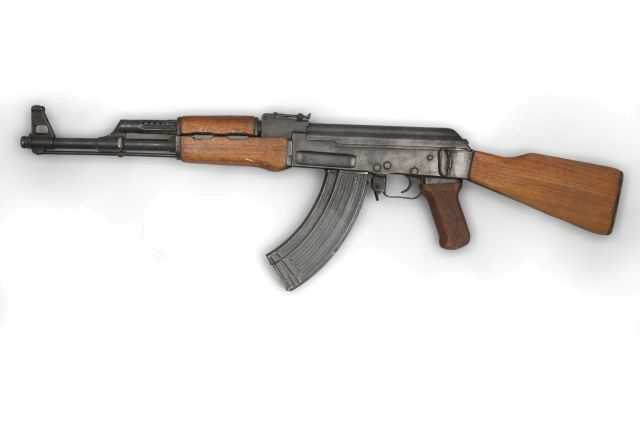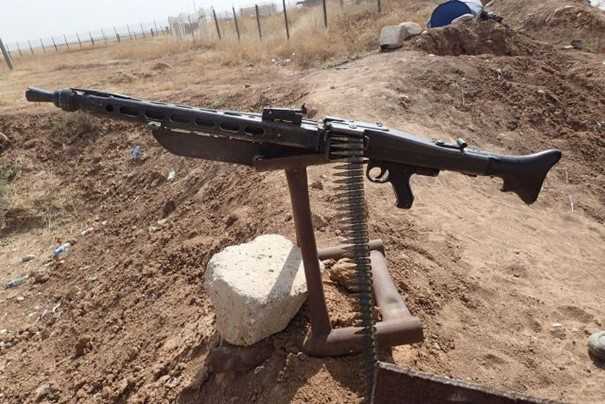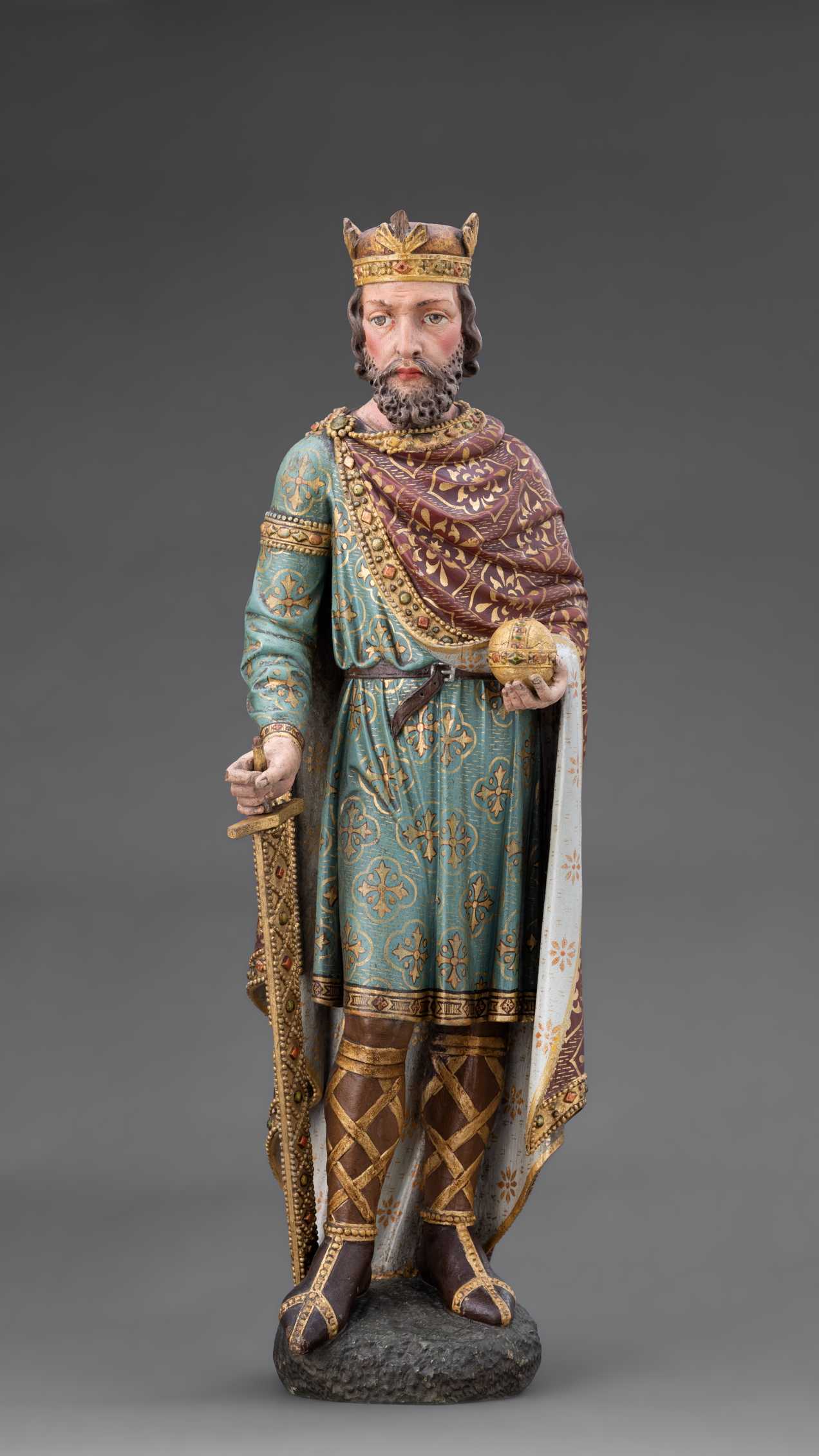Introduction to the authors and the unit
Trading arms and dual-use items – that is, items that can potentially be used for both civilian and military applications – is different from trading any other type of goods or services. It comes with risks and potential security concerns, and as such, states have long asserted rights, accepted obligations and imposed controls that do not exist in other areas of trade. This learning unit will cover the history of how controls over the trade in arms and dual-use items, often abbreviated to ‘export controls’, came about, why states developed them, and what activities and items they cover today.
Although they share similarities, the rationales for the controls on transfers of arms and dual-use items are not the same, which is reflected in the multilateral instruments and standards that states developed in this field. Export controls on conventional arms and on dual-use items will therefore be explored separately. Part of the learning unit will also focus on the European Union and its member states, as they decided to establish their own standards and regulations for the trade in arms and dual-use items at a regional level, resulting in a more detailed set of agreed rules than in any other region.
At the national level, states implement and apply multilateral and regional obligations and standards through their national export control systems. We will take a look at the various elements that these national export control systems often share, and at the main actors involved in their implementation. Finally, we will conclude with some of the common challenges that arms and dual-use export controls currently face, and explore ways to address these challenges.
For as long as states have exported military and security items there have been examples of them applying limitations and restrictions to this trade. As early as the Middle Ages, for example, Charlemagne ordained, in 805, a prohibition on the trade of weaponry with his enemies.
What are dual-use and arms trade controls?
Before moving on to the rest of the unit, it is worth noting that arms and dual-use export controls regulate the legal trade in these items, and that – although related – this unit will not cover the scope or dynamics of the illicit trade in arms and dual-use items.
A brief history of developments of export controls
Pre-World War I:
It is possible to trace attempts to control the trade in military equipment and technology back to as early as antiquity, but states developed more modern forms of controls from the 17th century onwards, mainly during wartime, to address national security concerns.
Key developments pre-World War I
- 419
A Rome edict prescribes death as the punishment for any Roman who taught shipbuilding skills to any Barbarian tribes
- 805
Charlemagne ordains a prohibition on the trade of swords and coats of chainmail manufactured in the Frankish empire with his enemies
- 1853–1856
During the Crimean war, the UK establishes a system of export licensing to prevent arms from reaching Russia
- 1890
the Brussels Act is adopted by colonial powers prohibiting arms transfers to large parts of Africa
(see LU20 for more historic examples)
Between the world wars:
Following World War I, states started using export restrictions in an attempt to promote peace and prevent armed conflict. This led to increased efforts to make the import and export of military materiel more transparent, and to the development, in the main industrialised states, of national export control systems.
Key developments between WW I and WW II
- 1919
Nine states including France, the US and the UK impose an arms embargo on China during the ongoing civil war
- 1923
League of Nations resolution requests the Secretariat to collect and publish information on imports and exports of arms and ammunition
- 1930s
Development of national export control legislation in the UK (1931), Belgium (1933), the USA, Sweden, and the Netherlands (1935), and France (1939)
(see LU20 for more historic examples)
During the Cold War:
With the beginning of the Cold War, export controls became a tool used both by the Warsaw Pact and NATO states to limit the opposing bloc from accessing key technologies. The US, NATO allies (except Iceland), Australia and Japan set up an informal agreement, the Coordinating Committee for Multilateral Export Controls (COCOM), to control exports on a list of military and dual-use items to the Soviet Union, other Warsaw Pact states and (from 1957) China. Their goal was to limit the ability of these actors to obtain Western technology and develop their defence and technological industrial bases.2
It is during this period that many states developed their national export control systems. And, as national security concerns related in particular to WMD grew, groups of like-minded states also established multilateral export control regimes. The first UN arms embargoes were also adopted, as states increasingly sought to use sanctions and export controls to pursue conflict prevention, non-proliferation and humanitarian objectives.
Key developments during the Cold War
- 1950
Creation of the Coordinating Committee for Multilateral Export Controls (COCOM)
- 1963
UN Security Council Resolution 181 establishes the first UN arms embargo, calling on all states to cease arms sales to apartheid South Africa
- 1974
Creation of the Nuclear Suppliers Group, with a focus on nuclear-related items
- 1985
Creation of the Australia Group, with a focus on chemical weapons-related (and later also biological weapons-related) items
- 1987
Creation of the Missile Technology Control Regime, with an initial focus on controls on ballistic missiles capable of delivering nuclear weapons
After the Cold War:
After the end of the Cold War, states on both sides of the former East-West blocs took a more cooperative approach to develop common standards in export controls and increase transparency of international arms transfers.3 An example of this was the establishment in 1991 of a UN Register of Conventional Arms (UNROCA), as a confidence-building measure to encourage states to help ‘prevent excessive and destabilising accumulation of arms’.
The United Nations Register of Conventional Arms (UNROCA)
The United Nations Register of Conventional Arms (UNROCA) website
The United Nations Register of Conventional Arms (UNROCA) website serves as a platform promoting transparency in the global arms trade. Users can access detailed reports on international transfers of major conventional weapons, including battle tanks, armored combat vehicles, large-caliber artillery systems, combat aircraft, attack helicopters, warships, and missiles and missile launchers. The site offers an interactive feature where visitors can click on a country to view its reported arms transfers, providing insights into global arms trade dynamics. Additionally, the website provides information on participation, reporting guidelines, and categories of conventional arms, supporting efforts to monitor and regulate arms transfers worldwide.
Concerns around the proliferation of WMD also led states, especially following 9/11 and the discovery of the A.Q. Khan’s nuclear proliferation network (see Box in Chapter 3), to adopt UN Security Council Resolution 1540. For the first time, this Resolution required every UN member state to put in place adequate export controls, and included a series of measures aimed to prevent WMD proliferation to non-state actors, including terrorist organisations.
States and non-governmental organisations (NGOs) also continued to pursue the establishment of arms control measures grounded in humanitarian concerns. One area they increasingly focused on was the role of SALW in fuelling violence and conflicts, and the need to strengthen SALW controls4. These efforts were a key motivator for many of the NGOs and states that promoted the negotiation and adoption of the ATT, which entered into force in 2014. The ATT is the first international treaty to set obligations in the field of the international trade in conventional arms.
At the EU level, states worked closely together to increase the level of convergence in the field of export controls, which resulted in the adoption of common regulations for the trade in arms and dual-use items in the 1990s. Both sets of controls continue to be developed and expanded, as will be addressed in Chapter 4.
Key developments after the Cold War
- 1991
Establishment of the UN Register of Conventional Arms and the P5 guidelines for conventional arms transfers
- 1993
Adoption of EU’s Common Foreign and Security Policy, giving the EU the legal power to adopt arms embargoes
- 1994
Dissolution of COCOM
- 1994
EU adopts two pieces of legislation for regulating the intra and extra-EU trade in dual-use items
- 1995
Ceation of the Wassenaar Arrangement on export controls for conventional arms and dual-use goods and technologies
- 1998
Adoption of the EU code of conduct on arms exports defining common rules for arms export controls
- 2001
Adoption of the UN Programme of Action to Prevent, Combat and Eradicate the Illicit Trade in Small Arms and Light Weapons
- 2004
Adoption of UN Security Council Resolution 1540
- 2008
Adoption of the EU Common Position, replacing the EU code of conduct
- 2009
Adoption of the EU Dual Use Regulation, consolidating EU controls in a single legal instrument
- 2014
Entry into force of the Arms Trade Treaty (ATT)
Defining ‘arms’ and ‘dual-use items’
‘Arms’ are generally subdivided into two main categories: conventional weapons and WMD. Weapons of mass destruction, which include chemical, biological and nuclear weapons, are covered in more detail in Learning Units 2 (Chemical Weapons), 3 (Biological Weapons), 4 (Nuclear Weapons 1) and 5 (Nuclear Weapons 2). In terms of definitions, this learning unit will focus on conventional arms, which encompass a wide range of weaponry, from major arms (e.g. warships, armoured combat vehicles, missiles and combat aircraft) to SALW (e.g. guns, machine guns, rifles) and their ammunition.



Although there is no internationally agreed definition of ‘arms’, several instruments – namely COCOM, UNROCA, the ATT and the Wassenaar Arrangement – have made efforts to define what constitutes ‘conventional arms’, ‘arms’ or ‘military items’ for the purposes of export control standards. This has resulted in a variety of definitions and scopes depending on the instruments, covering both physical items and some software and technology ‘specially designed’ for military purposes.
Dual-use items cover physical goods as well as technology which have the potential to be used for both civilian and – conventional or WMD – military applications. While these items were not specifically designed or modified for military use, they may have a military application. National authorities therefore need to evaluate the risk that the item in question could have a significant impact on military capabilities, be misused or contribute to WMD proliferation. If this is the case, national authorities can decide to control the transfer of this item by adding it to a control list. This results in the transfer of many items with day-to-day civilian applications being subject to an authorisation process – a license application – because of their dual-use nature. For example, triethanolamine, a chemical that is widely used in the soap and beauty industry but also happens to be a precursor for mustard gas, is controlled under the Chemical Weapons Convention and the Australia Group control list (see Learning Unit 2). In the realm of missiles, space launch vehicles (SLVs) share many technological similarities with ballistic missiles. These similarities have even increased with the recent development in small and micro launchers, which are technologically closer to medium and intermediate-range ballistic missiles than previous types of SLVs.5 Therefore, SLVs, as well as their parts and components, are controlled within the Missile Technology Control Regime (MTCR) (see Learning Unit 7).
Focus on intangible transfers of technology
As well as physical items, arms and dual-use export controls also cover certain software and technology, which take a non-physical – intangible – form. Controlled software includes for example certain types of encryption software, which uses cryptography to secure access to digital information, as well as AI software specially designed to be used in conjunction with a controlled military or dual-use item. Technology includes knowledge and technical assistance, such as instruction, training or consulting services, as well as technical data, such as blueprints, plans and diagrams. An example of technical data is the digital build files which contain technical specifications for 3D printers to produce missile parts, or 3D printed guns.
Intangible transfers of technology (ITT) cover the export of this software and technology which takes place through non-physical means, such as electronic transfer (e.g. by email, or via cloud computing), phone calls or in-person meetings.
Although not new, ITT have progressively taken on a growing importance in recent years. This comes with challenges, as some methods of enforcing the controls (e.g. physical checks at the border) are not applicable for ITT.6 As a result, strengthening compliance and outreach towards companies and other relevant actors is especially important in this domain
Why do states develop export controls?
Arms export controls were initially established by states to address national security concerns. States first imposed ad hoc controls during wartime to prevent their adversaries from accessing key military technologies. Many states then established more complex systems to regulate arms transfers, also during peacetime.7
National security concerns remain a key motive for arms export controls today, but over the course of the 20th century, concerns around the humanitarian impact of the use of weapons grew, which led to a progressive expansion and strengthening of the controls in place. As a result, states established rules and treaties which go further and entirely ban the transfer, as well as production, stockpiling and use of specific types of conventional weapons, including anti-personnel mines and cluster munitions, due to the unnecessary and indiscriminate suffering these weapons can cause.
For other types of weapons whose transfer is not banned, arms export controls also now include provisions to prevent arms from being diverted, from being used to exacerbate existing conflicts, from contributing to destabilising military build-ups or from being used in connection with violations of international human rights law (IHRL) or international humanitarian law (IHL) see Learning Unit 17.
States’ policies on arms export controls and their decisions to approve or deny particular transfers are weighed against foreign policy, economic and strategic considerations. For example, major supplier states have traditionally been protective of their national defence industry and arms exports have often been viewed as playing an important role in this strategy.
Dual-use export controls have been more closely associated with the prevention of WMD proliferation, but human rights and IHL considerations have become more prominent in recent years. For example, since the 2010s, states have adopted controls on the transfer of certain types of cyber-surveillance tools (both software and hardware), such as mobile telecommunications interception equipment and intrusion software. Moreover, the breadth of what is covered by controls on dual-use items mean that a broad range of considerations can influence state policy in this area. For example, policies on the transfer of dual-use items can also be linked to development goals, such as for items that have key applications in medicine or agriculture. More generally, states try to ensure that the controls preserve the economic and technological opportunities that dual-use items can provide in the civilian realm.
Quiz
Footnotes
-
Anthony, Ian (ed.). 1991. Arms Export Regulations. SIPRI. Oxford University Press, p. 3 ↩
-
Henshaw, John. 1993. “The origins of COCOM: Lessons for contemporary proliferation control regimes”, The Henry L. Stimson Center, Report No. 7 (May), available at: https://www.stimson.org/wp-content/files/file-attachments/Report7_1.pdf ↩
-
Bromley, Mark/Cooper, Neil/Holtom, Paul. 2012. “The UN Arms Trade Treaty: arms export controls, the human security agenda and the lessons of history”, in: International Affairs 88, (5) September 2012: 1029–48, available at: https://doi.org/10.1111/j.1468-2346.2012.01117.x ↩
-
Bauer, Sibylle. 2010. “Post-cold war control of conventional arms”, in: Tan, Andrew (ed.) The Global Arms Trade: A Handbook. Routledge, p. 307. PhD diss., Stockholm University, available at: http://www.diva-portal.org/smash/get/diva2:1654783/FULLTEXT01.pdf ↩
-
Maitre, Emmanuelle/Moreau-Brillatz, Sophie. 2022. “The Hague Code of Conduct and Space”, HCoC Research Papers, No. 10 (March), Foundation for Strategic Research: Paris, available at: https://www.nonproliferation.eu/hcoc/wp-content/uploads/2022/03/HCoC-and-Space-v2.pdf ↩
-
Bromley, Mark/Maletta, Giovanna. 2018: The challenge of software and technology transfers to non-proliferation efforts: Implementing and complying with export controls, SIPRI: Stockholm. https://www.nonproliferation.eu/wp-content/uploads/2019/11/sipri1804_itt_software_bromley_et_al.pdf ↩
-
Bromley, Mark, 2022. “Understanding European Arms Export Controls - Material Interests and Competing Norms”, PhD diss., Stockholm University ↩


